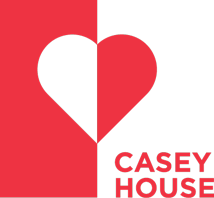My name is Brad*, and this is my story. It probably starts out a lot like yours.
I was born into an average family in an average small town in southern Ontario in 1963. But I wasn’t like my parents or my siblings. I knew I liked boys as far back as I can remember, and that it made me uncomfortable to think or talk about sex.
By the time I was a teenager, I knew without a doubt that I was gay, but I was too afraid to tell anyone else. It felt clear to me that my family wouldn’t understand, and neither would my community. Besides being the punchline in jokes, it felt like nobody talked about, thought about or cared about gay people. I felt alone.
When I was a senior in high school, I had a massive crush on Ryan. I would have given anything to ask him to prom, but instead I took my best friend Nancy because I knew it wouldn’t be possible to ask a guy.
When I was 22 I moved to Toronto. I wanted to escape my small town, but more than that, I wanted to stop hiding. The big city allowed me to explore my sexuality in a way I never could before, and live freely as a gay man.
I became a part of a community and met lots of gay friends who had pasts like mine. I wasn’t alone anymore. I had fun. We all had fun.
By the time I hit my late twenties, my friends started getting diagnosed with HIV, and dying. I sat with them, cried with them, and held them as they spent their last days at Casey House. By 1992, I watched an entire community – literally all of my friends – die.
I became convinced that I was next. I really thought I was going to die. Then, in 1994, it happened. I was diagnosed as HIV positive. I was 31 years old.
I started treatment in 1995, taking AZT, an early HIV medication, but major side effects kept me in the hospital for two months and left me with permanent liver damage. I ended up spending another few months recuperating at home. My health wasn’t great, and I was forced to stop working. I went on ODSP and moved to a smaller apartment.
In 1997, when it became available, I began highly active antiretroviral therapy (HAART), which stabilized my health. And while it didn’t come with adverse side effects, it didn’t mean that things were great. The next year I ended up acquiring a bacterial pneumonia that only people with compromised immune systems are susceptible to, and ended up in the hospital for a month. After that I was discharged to the Casey House inpatient program, where I stayed for another month to recover.
Once I was discharged, I spent all my time at home, alone and isolated. I was 37 years old and unable to work, so I didn’t even have coworkers to see on a daily basis. My lack of friends and time spent alone led to a diagnosis of depression. I started seeing a psychiatrist who began treating my depression, which was good, but it meant new meds. Pills after pills after pills.
My early 40s were a challenge, and not because of a mid-life crisis. The combination of my HIV, my age, and poor nutrition meant that a small scrape turned into a deep wound within a day. It took nurse from Casey House coming to my home three times a week for three months to clean and dress my wound before it healed properly.
In 2017, Casey House started a day health program, and I registered as soon as I could. They considered me a “perfect candidate” because of my social isolation and the neuropathic pain I experience. I never imagined that these burdens in my life would be my entry into such an amazing place.
Through the day health program I am able to have a massage and physiotherapy once a month, which is wonderful because HIV has affected the nerve endings in my hands and feet. They tingle constantly, and pain medication just does not help.
My social circle is starting to grow again because I’ve got a place to come for lunch and just hang out with people who aren’t going to judge me. And I’m a member of the legends group for clients over 50. I’m eating more and even gaining a bit of weight.
As I look ahead to my sixties, I know what’s ahead. I know that my HIV medications are softening my bones, so osteoporosis is likely. I also know that my mobility will continue to decrease, and that my risk of falling is going to be greater all the time. I’ll probably end up with an assisted device, which will make me feel like an old man, which is funny. Not that many years ago I never imagined I’d ever become an old man.
Knowing that Casey House will be there to support me in whatever happens makes thinking about my future less scary. It’s comforting.
My name is Brad, and this is my story.
But it’s not just my story. It’s the story of hundreds of people just like me, whose lives have been changed because of the compassion and care offered by Casey House. It’s the story of Andrew and Steve and Rick and Kyle and so many others.
Together, we’re the face of Casey House.

